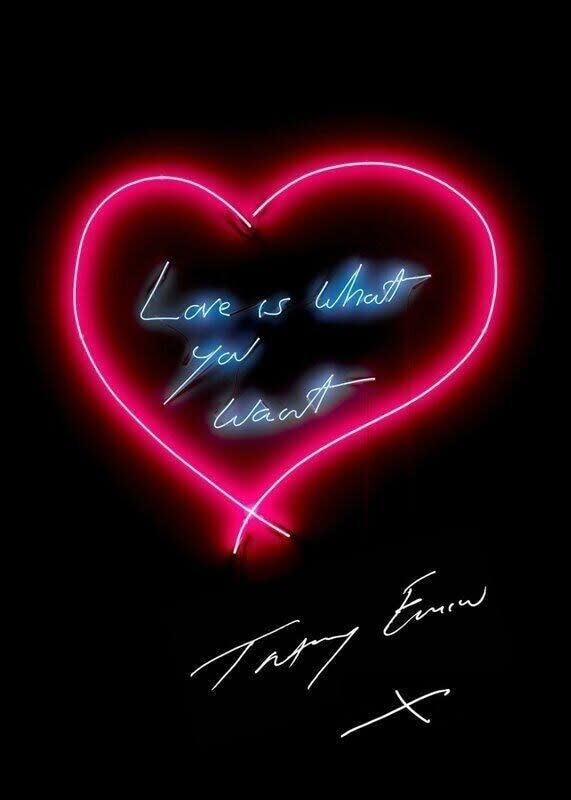Tracey Emin British, 1963
Love is what you want, 2015
Lithograph on 250 gsm silk finish paper
Signed by the artist, on recto
Signed by the artist, on recto
70 x 50 cm
© Tracey Emin
Tracey Emin's word art represents a revolutionary approach to artistic expression through its raw, unfiltered authenticity and deliberate rejection of conventional linguistic norms. Her words, often scrawled in her distinctive...
Tracey Emin's word art represents a revolutionary approach to artistic expression through its raw, unfiltered authenticity and deliberate rejection of conventional linguistic norms. Her words, often scrawled in her distinctive handwriting with intentional misspellings and grammatical errors, serve as direct channels of emotional communication.
Words fill Emin's head more than images, and she frequently begins her artistic process by conceiving titles before creating visual elements. Through various media, including neon signs, embroidered blankets, and monoprints, her textual works function as intimate confessions that challenge traditional artistic boundaries.
The power of Emin's word art lies in its deliberate defiance of linguistic conventions. Rather than viewing her misspellings as mistakes, they represent a conscious challenge to institutional definitions of correct language. Her refusal to conform to grammatical rules prioritises authentic expression over standardised communication.
Emin's integration of text into her art transcends mere aesthetic choice; it becomes a form of visual journaling that captures raw emotions and personal experiences. Her words, whether illuminated in neon or stitched into fabric, transform everyday sentiments into high art, creating a unique artistic language that bridges the gap between personal confession and public display.
Words fill Emin's head more than images, and she frequently begins her artistic process by conceiving titles before creating visual elements. Through various media, including neon signs, embroidered blankets, and monoprints, her textual works function as intimate confessions that challenge traditional artistic boundaries.
The power of Emin's word art lies in its deliberate defiance of linguistic conventions. Rather than viewing her misspellings as mistakes, they represent a conscious challenge to institutional definitions of correct language. Her refusal to conform to grammatical rules prioritises authentic expression over standardised communication.
Emin's integration of text into her art transcends mere aesthetic choice; it becomes a form of visual journaling that captures raw emotions and personal experiences. Her words, whether illuminated in neon or stitched into fabric, transform everyday sentiments into high art, creating a unique artistic language that bridges the gap between personal confession and public display.



